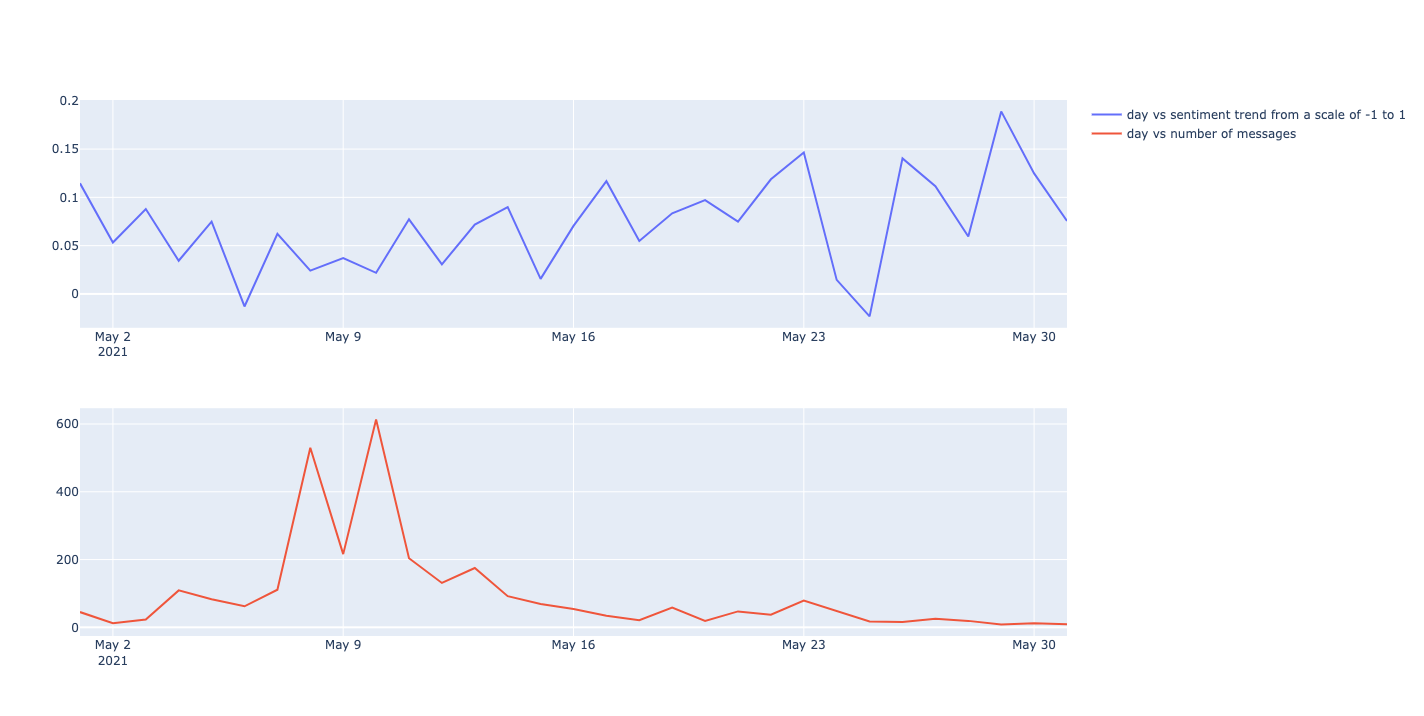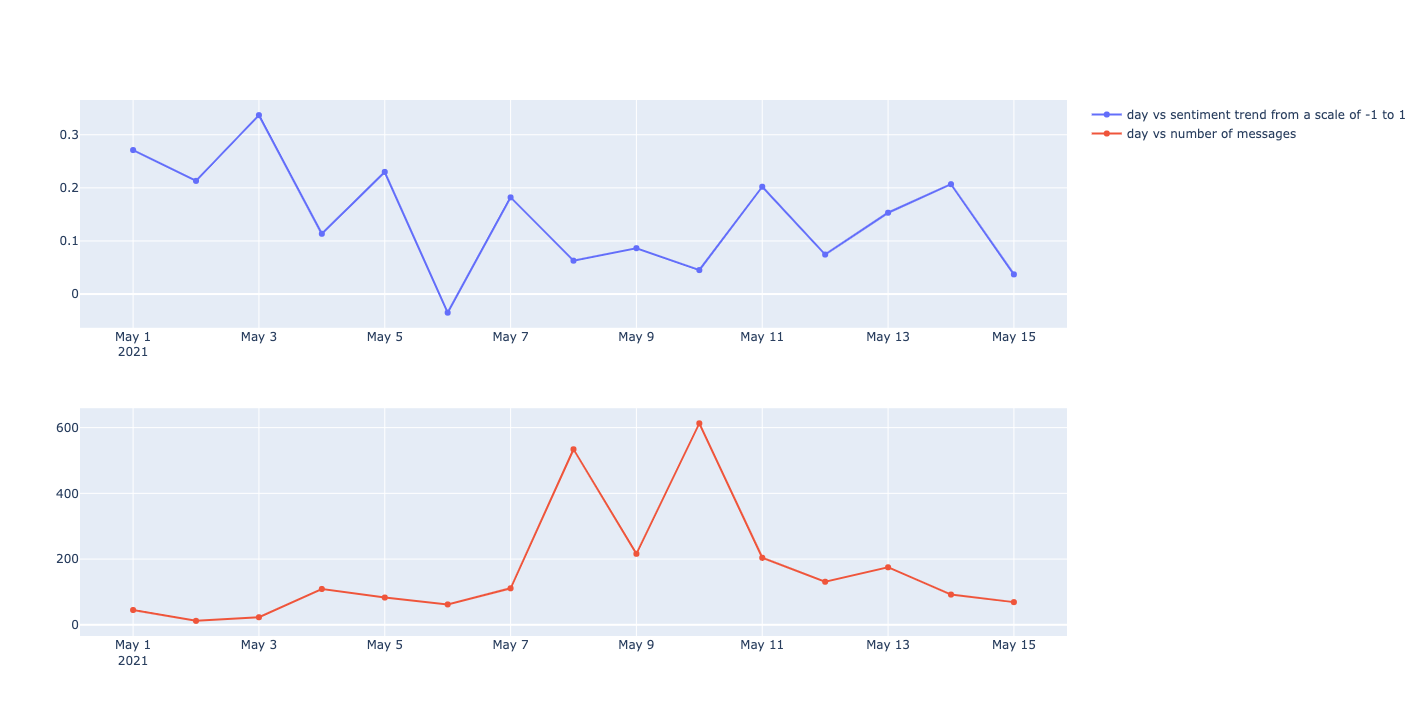The package is developed on Python 3.8.9 environment and uses APIs and methods that are compatible with Python 3.7+ interpreters.
.
├── output # screenshots of results
├── src # Source files
│ ├── data # JSON files after exporting from telegram
│ └── analyzer.py # main executable python file
├── requirements.txt
├── LICENSE
└── README.md
-
datafolder contains two JSON filesdata.jsonanddata_may.json. data.json contains the telegram chats from May 1st to May 15th. data_may.json contains telegram chats for the entire month of may. This was done so that I could verify if the code was extensible to any timeframe and any JSON file. -
analyzer.pytakes in a certain set of options (check out How to run) and generates a line graph to show the average sentiment on a daily basis and the number of messages that contain any mention of SHIB or DOGE. -
I have used the NLTK Vader Lexicon Sentiment Intensity Analyzer to compute the sentiment of each text message. I also saw
FLAIRbut liked the APIs that Vader provided, so I decided to move forward with Vader.
- nltk
- tqdm
- plotly==5.4.0
-
Enable Python virtual Environment
source bin/activate -
Install dependencies
pip3 install -r requirements.txtor pip install -r requirements.txt
-
Go to src folder
cd src -
Run the below command to generate the sentiment graph
python3 analyzer.pyIf
python --version> 3, then the below command would also sufficepython analyzer.py
-
When no options are passed it parses
data.jsonfile in data folder (telegram chats between may 1st to may 15th). -
to print the average sentiment values in the console, you can use the
--traceoption as shown below:python3 analyzer.py --trace
-
to specify a particular file use the --file option with the fileName as the last argument to the script, eg:
data_may.json(telegram chats for the entire month of may 2021) under the data folderpython3 analyzer.py --file ./data/data_may.json
-
A combination of both
--traceand--filecan be seen below:python3 analyzer.py --trace --file ./data/data_may.json
-
To exclude all messages with neutral sentiment from the average pass the
--exclude-neutraloptionpython3 analyzer.py --exclude-neutral
- Many telegram chats have neutral sentiments and I have considered these in the average sentiment. I have calculated the average sentiment using the below formula
average = sum(compound polarity score)/number of messages
I am summing up the compound polarity score from the NLTK Vader model.
- methods
analyzeandanalyzeWithoutNeutralare executed to get the average sentiment distribution.
- Following is the plot of day vs average sentiment and number of messages over the period of May 1st to May 15th
-
The following are the data cleaning and preprocessing cases handled:
-
Filter out all messages that do not have
shibanddogein any portion of the string. -
Some messages are lists as they have links and other components excluding the tests. For these messages, I have checked if any one of the component have
shibordoge. -
method
checkIfContainsXhandles the filtering of the above keywords. -
many messages have emojis and since emojis can also contribute to the sentiment of the message we need to include them in the processing. I have observed that NLTK Vader does not account the emojis for the analysis. Hence I am using
demojipackage to convert the emoji to its appropriate text description. -
All messages with non-ASCII text is not being considered.
-
-
I have also tried to execute the same script to chats spanning for the entire month of May to check if it corroborates with the trend specified here. The output is seen below
-
NLTK Vader would not be able to recognize text messages in hindi transliterated to english. I could observe a lot of such english messages whose sentiment would be positive/negative in hindi. One additional data processing step could be to try to translate the text to english. I have not developed this step as I am wary if the translations would be accurate.
-
the sentiment analysis if we were to exclude all neutral messages are as shown below:


